Perched on the western shoulders of Europe, the British Isles has a complex winter climate. One day we are warmed by upwellings of southern air, the next blasted by Atlantic gales. A downward dip in the jetstream can usher in Arctic snows and frosts.
In milder conditions, heavy rain sets loose the landscape, creating inland lakes from over-brimming rivers. It’s unpredictable for us and for our wildlife, which has to cope with these extremes, including temperatures as low as –27°C in Sutherland in 1995.
The very unpredictability of British weather is a trial for many animals such as bats, butterflies and hedgehogs, whose winter sleep is interrupted in mild spells. So it's no surprise that many of them have had to adapt to survive these tough conditions.
- Best winter wildlife spectacles in Britain
- How to identify winter animal tracks
- How to prepare your garden for autumn and winter birds
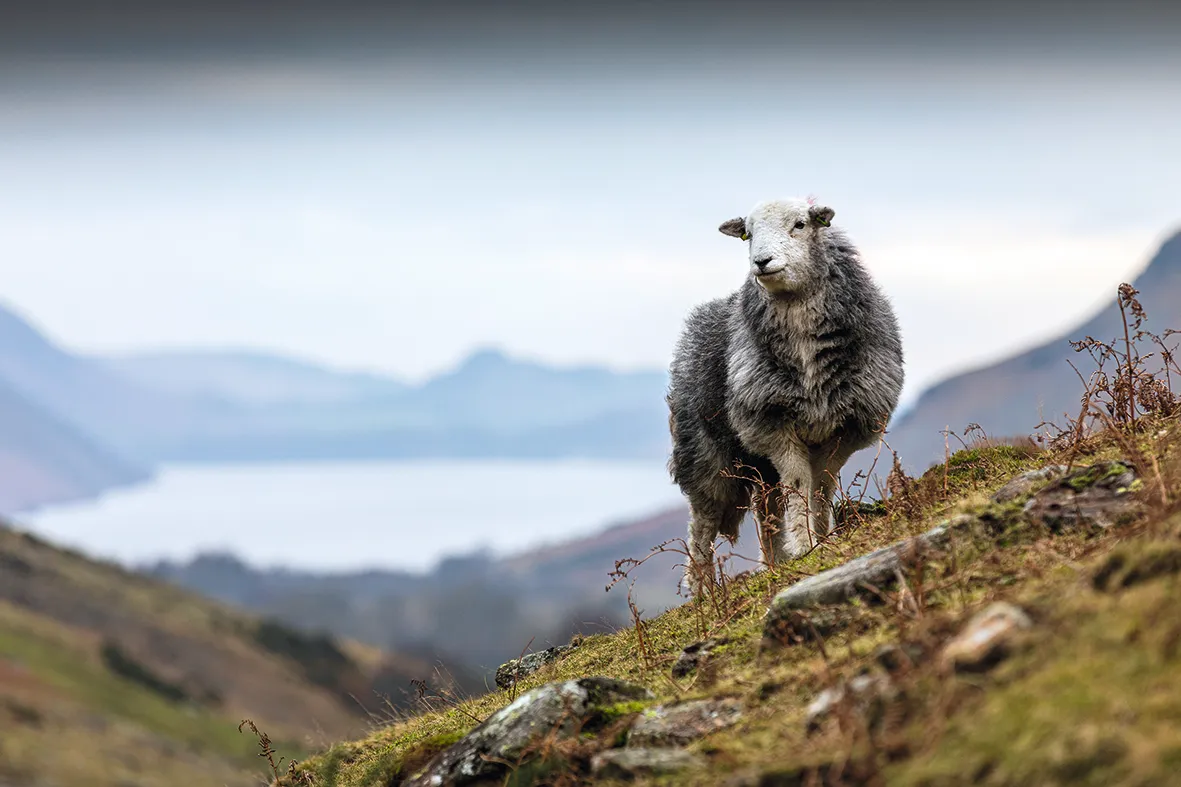
How wildlife copes with the cold
Wildlife copes with winter in many ways. Some insect-eating birds such as swallows simply fly away to warmer places. Some of our resident birds switch from insects to seeds and plant material over winter.
Birds that breed in the uplands – curlews and meadow pipits for instance – move to lower altitudes to escape freezing conditions. In persistent cold weather, many birds such as fieldfares, redwings, skylarks and lapwings take part in ‘hard-weather movements’, flying elsewhere to avoid the freeze.
But the real toughies, such as the ptarmigan or red grouse, stay put even in the harshest conditions, by trusting their dense insulating plumage and eking a living from plant shoots.
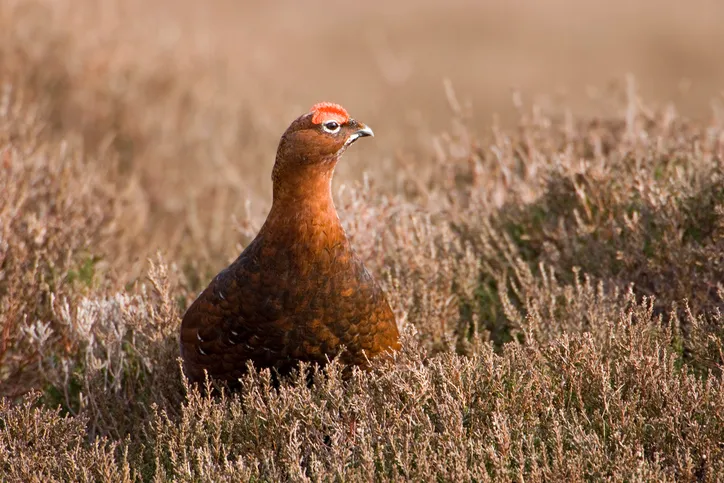
Our winter-active mammals rely on fur and fat to keep them warm. Dense blubber allows seals to shrug off the coldest waves, while Herdwick sheep and Exmoor ponies grow thick insulating coats.
Other mammals such as hedgehogs and bats hibernate by slowing down their metabolism to reduce energy and heat loss. Reptiles and amphibians bury themselves beyond the range of fatal freezes.
Many invertebrates also burrow into leaf-litter or soil or hide in trees or buildings to escape freezing. This isn’t strictly hibernation, but a state called diapause in which they halt their development until conditions are suitable. Insects for example, can spend the winter as eggs, larvae, pupae or adults.
Some butterflies such as the purple emperor will overwinter as caterpillars. Others, such as the brimstone, can survive by producing natural anti-freeze which prevents the water in their bodies from turning to ice crystals. A few insects like the snow flea remain active over winter, scavenging on the ones that didn’t make it through.
Britain's toughest animals
Exmoor pony

Frost and ice may glaze the heather on Exmoor in North Devon/Somerset, but the rugged Exmoor ponies can cope with the harshest winters. These cobby brown and bay ponies with mealy muzzles are the closest relatives in the UK to the original wild horses of Europe and have survived on the uplands since the last Ice Age around 10,000 years ago.
In winter they grow an extra layer to their brown coats that shields them from wind, but their diets are important for survival too. Exmoor ponies have a formidable digestive system that allows them to eat and process large amounts of rough vegetation including brambles and shrubs, which are ignored by more delicate horses. This intake fuels them throughout winter and has made them popular as conservation grazers.
Common frog
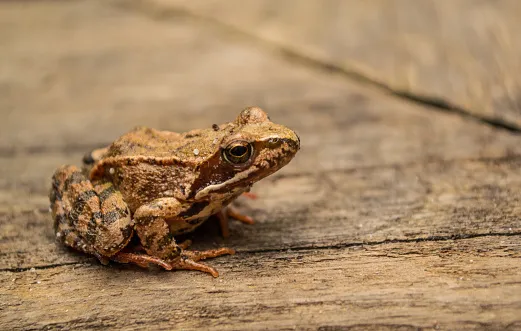
Even on the darkest winter days, you could see common frogs moving under the ice of your garden pond and in the south of England there could even be frogspawn before Christmas. They may be soft-bodied and vulnerable-looking, but frogs are remarkable survivors.
Unlike some North American frogs, British common frogs can’t freeze and reanimate themselves, but they can slow down their metabolisms and hibernate in mud at the bottom of ponds or in soft earth or under logs where frost can’t reach them. When you see them swimming under ice, they may have emerged to seek oxygen. You can help by placing a small ball on the pond surface to reduce the chances of a total freeze.
Brimstone butterfly
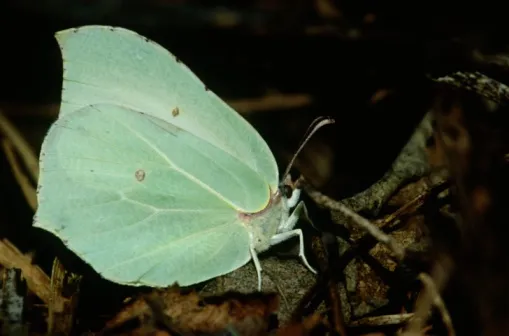
Several British butterflies weather winter by going into what is often called hibernation, but is actually a period of torpor in which they slow down their metabolism.
By producing chemicals called polyhydroxy alcohols, they can prevent their blood (or haemolymph) from freezing. Many of these butterflies, such as the small tortoiseshell or the peacock, reduce the effects of cold and damp by sheltering in hollow trees or in buildings, but the brimstone butterfly is made of tougher stuff and is able to spend the winter among evergreen leaves.
Ivy is a favourite wintering site and with luck you may spot a brimstone covered in ice-crystals among the leaves, waiting to be reanimated by the spring warmth – it’s usually one of the first to emerge.
Queen wasps
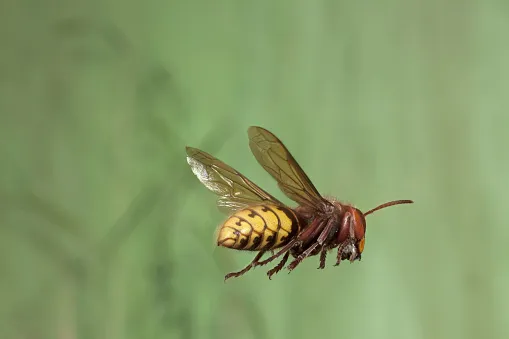
The colonies of social wasps, including hornets , die off in autumn as food supplies diminish. The only survivors are the queens, which will spend the winter in diapause and emerge in spring to found new colonies. You’ll often see queen wasps flying around outbuildings and house eaves as they search for a winter shelter. They’re also fond of hollow plant-stems, especially those of hogweed, and after chewing their way in will spend the coldest months safe in this natural dormitory, resting alongside insects such as earwigs and even hoverflies which would count as prey in mid-summer.
Purple emperor caterpillar

The sumptuously iridescent purple emperor butterfly is on the wing at the height of summer and a symbol of hot sunny days, so surely it’s madness to go looking for one in the depths of winter? True, you won’t find the adult butterflies but, incredible as it seems, purple emperor caterpillars spend the winter exposed to frost and snow in their native woodlands in southern England.
The larvae, with their slug-like horns, are brilliantly camouflaged as they sit motionless on sallow twigs and small branches, waiting for the spring buds to unfurl. It’s a risky business being exposed and many are eaten by parties of roving birds, such as tits and treecreepers.
Herdwick sheep

Herdwicks are the sheep that shape the Lake District landscape, stocky grey animals with white legs and faces.
- Who was Alfred Wainwright? A quick guide to the Lake District icon
- Beatrix Potter: history of the children's author, farmer and conservationist
They are our hardiest hill-sheep and nearly all Herdwicks graze the Cumbrian fells up to and above 900m, where temperatures often fall to -10°C or less. They can survive harsh winters because they have exceptionally durable blizzard-proof fleeces. There are tales of Herdwicks being buried for two weeks or more in snowdrifts, surviving at the bottom of a snow-chimney created by their breath, and eating their own wool for sustenance.
They are canny creatures too, hefted to their chosen area of ground, which the ewes know intimately and where they teach their lambs to find the best grazing. This combination of knowledge and hardiness makes them one of the toughest British mammals.
Ptarmigan
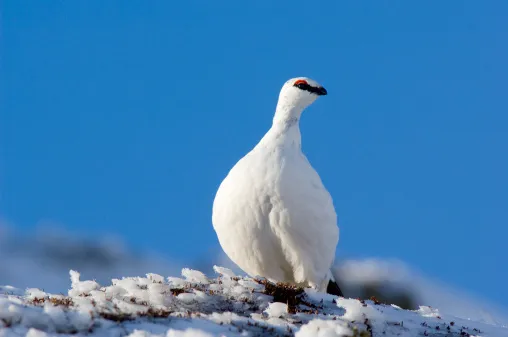
When icy winds scour the snow-covered tops of the Cairngorms, sending temperatures plummeting to minus 20°C or more, very few creatures can survive the winter. The ptarmigan is the only British bird that turns white in winter and its dense plumage gives perfect insulation. Even its feet are feathered – not just to prevent heat-loss, but to act as snowshoes.
Ptarmigan also conserve warmth by digging burrows. A bird will bury itself by flying into a snow drift to create a chamber, then kick out with its feet to disguise its entrance-hole. Snug in its snow-bunker, the ptarmigan will roost overnight or hunker down by day until the worst weather has passed.
Grey seal

Unlike the common or harbour seal, which pups in midsummer, the grey seal pups in autumn. Born in the teeth of an Atlantic gale and sand-blasted by winter storms, the grey seal pup has to cope with harsh conditions from day one.
The adult seal’s best defence against grim weather is its dense layer of blubber that can be between 6cm and 12cm thick in places and shields its vital organs against the cold while reducing heat-loss. The female grey seal feeds her pup on rich milk that is around 60% fat, to allow it to gain weight rapidly. After a brief fast, the pup leaves the shore for the first time to fend for itself among the chilly Atlantic and North Sea breakers.
Beadlet anemone

The seashore is a demanding environment at the best of times. At low tide, many animals are exposed to dehydrating winds or hot sun. Winter, when temperatures above and below water-level fall, is a real test for creatures such as limpets and periwinkles, but even more so for soft-bodied and animals such as beadlet sea-anemones.
Natural salinity reduces the chances of freezing on the shore, but to avoid drying out in fierce winter gales, the beadlet anemone retracts its tentacles and sits out the storm as a blob, like a sucked gumdrop, on the wave-battered rocks.
Black slug
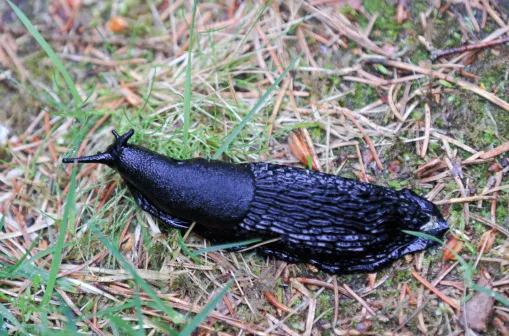
Many slugs are remarkable survivors and spend the winter in pockets in the soil, under logs or in cracks in walls. The large black slugs (Arion ater) that are common in our gardens and have an orange frill around their bodies occasionally get caught out in the cold when mild weather suddenly dips below freezing. The water in their slimy bodies can freeze in these conditions but, amazingly, some adult slugs can survive partial freezing and will come back to life if exposure isn’t too prolonged or severe.
